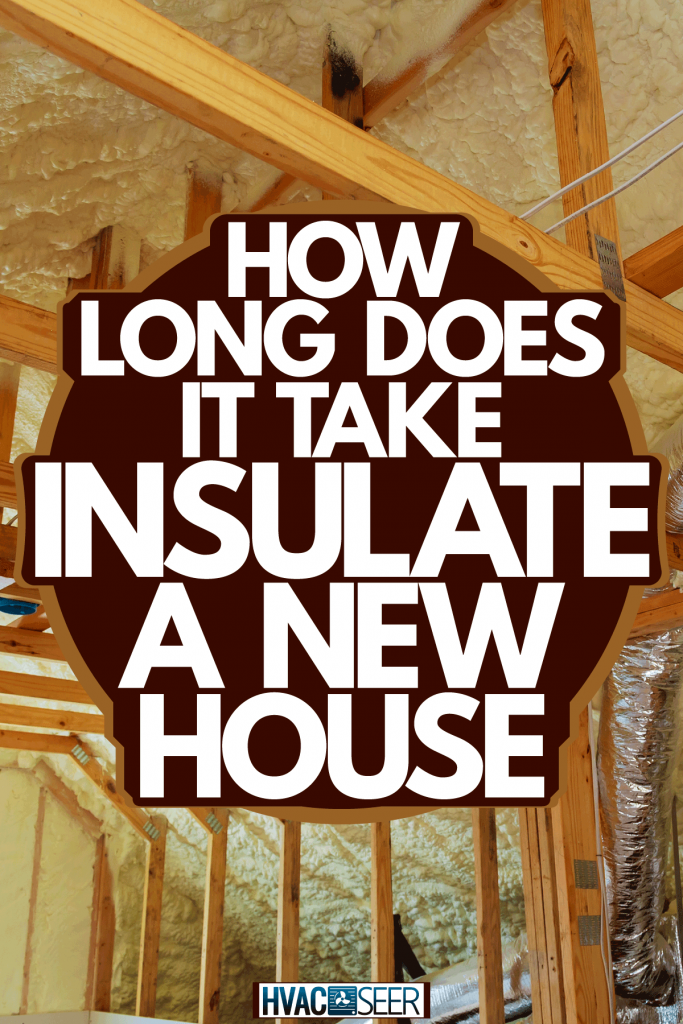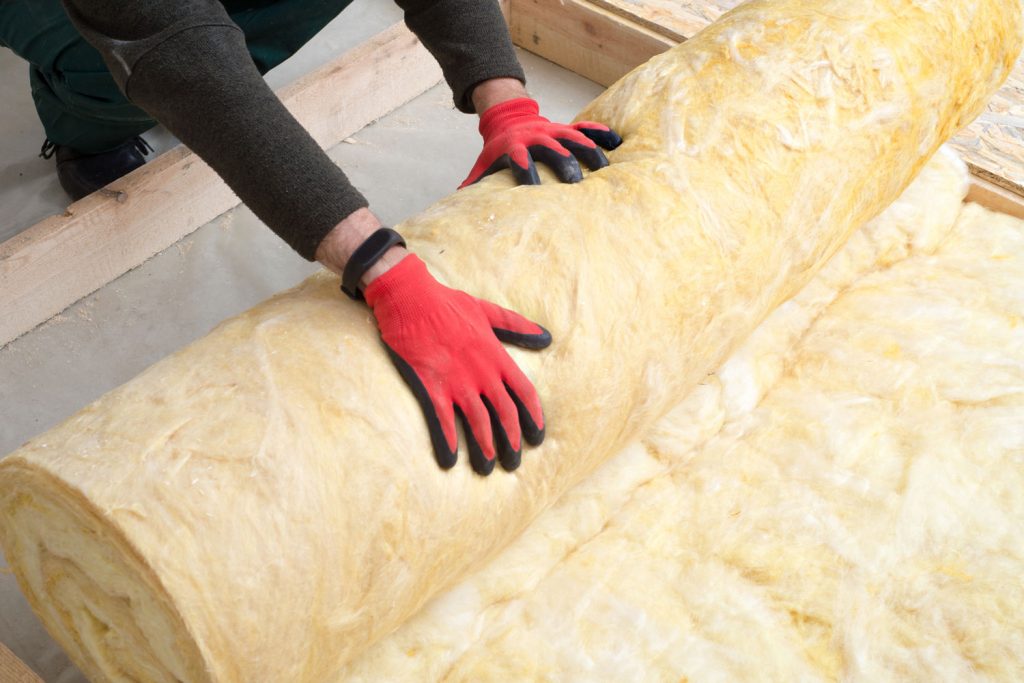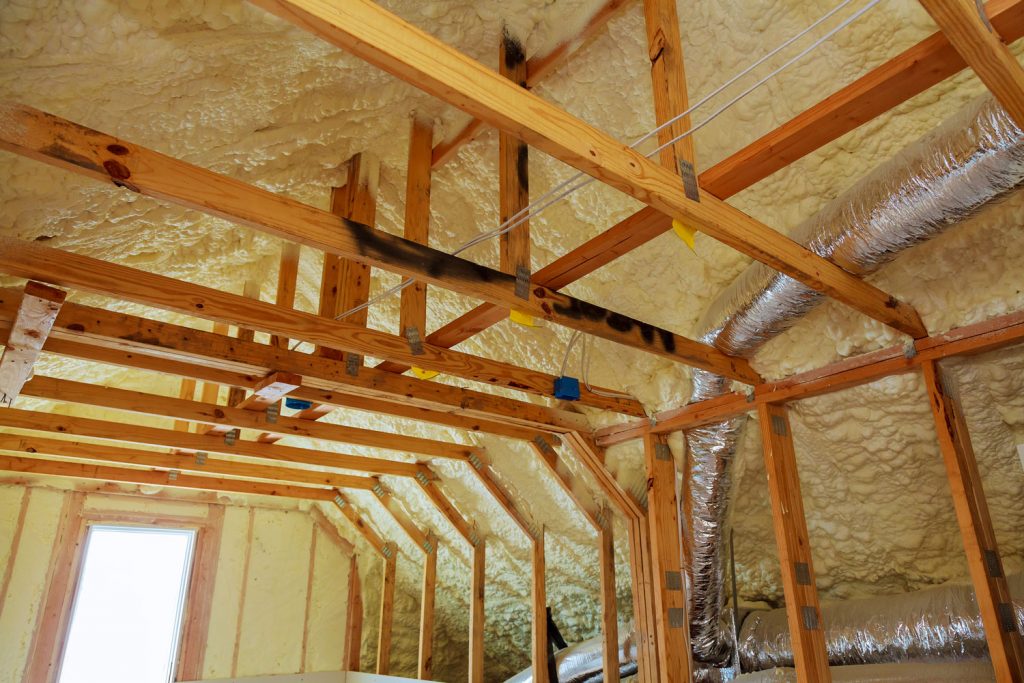If you're building a new house or are renovating, there is so much to consider. You'll have to think about the flooring, the paint, interior design, and much more. Another aspect you'll have to consider is insulation. What type of insulation should you use? And, more importantly, how long does it take to insulate a new house?
There are several options for insulation for your new home. Each requires laborious work. In general, it can take anywhere from five hours to 12 hours to insulate the average new home.
Other factors can influence how long this job will take:
- the home's square footage
- accessibility of the areas being insulated
- DIY versus professional laborers
If you're new to insulation, you might want to consider your options. There are many insulation types, but some might be better for your situation than others. Additionally, there are other questions that we might cover further. If you'd like to find out more, keep reading ahead.

Installation Timeframe
The length it takes to install insulation depends on the amount of work you want to do for that day. Other areas can take less or more time to complete. Let's go over some of the spaces you might want to insulate.

Existing Walls
Existing walls take around 2-5 hours to insulate with spray foam. The timeframe varies because you'll have to take the size of the wall, the stories in your home, and more into consideration.
Attics
Attics can take up to a day to install insulation. Since you're insulating a new home, you won't have to worry about taking old insulation out. Instead, the big time-consumer would be the accessibility of specific areas within the attic. The pitch of it is another factor that will influence the amount of time you spend.
Crawl Space
The crawl space would be one of the least time-consuming installations. Its only obstacles are its accessibility.
Rim Joist
Another area that will take less time to install insulation is the rim joists' vicinity. Again, the only obstacle this area faces is the design of the basement and its accessibility.
Average House Size
To tie it all together, the timeframe to install insulation in your entire home factors in the size of an average home. As some suggest, the average size home is around 2,687 square feet. Of course, the size will vary by region, personal choice, and budget.
DIY or Professional Installation
The last aspect to factor into installing insulation is who will do the job. If it's a DIY project, it will take longer, depending on your experience. However, if you opt to have professionals install it for you, it will take the least amount of time.
Some companies claim they can do it in a day or two -for example, a 1,200-1,300 square foot area might take five hours or less for a professional team to foam insulate.
Does Insulation Work Immediately?
The type of insulation you choose to install determines if it works immediately. One kind that won't work right away is spray foam insulation. The reason being, that you need to wait until it cures before it begins to work. Another reason why it won't work immediately is that spray foam comes in two components that you must mix before applying.
Additionally, you will have to wait 24 hours until it cures. From here, if it is installed correctly, it should work immediately. However, if you notice the temperature changes drastically, there might be some issues with how you applied the foam.
Other types of insulation do not require mixing. Typically, they're dry forms like mineral wool and fiberglass insulation. To install them, you can simply lay them down in the area you desire. These types of insulation should work immediately.
What Is the Proper Way To Insulate a House?

Insulating a home properly can be a tough job to do. All it takes is one mistake, and the insulation you applied will not work as effectively. So, what is the proper way to insulate a house?
As some suggest, if you want to make sure your insulation type works efficiently, you should consider some steps beforehand. Let's take a look at areas to focus on for the best result.
Sealing Up Spaces Beforehand
One way to increase the effectiveness of insulation is by sealing air bypasses. Air bypasses are present near chimneys, wires, plumbing vents, and exhaust fans. These are the areas where warm moist air escapes into the attic. Overall, these are some of the aspects you need to keep in mind when insulating an attic.
Careful Installation
On the other hand, walls also require accurate detailing. As some suggest, leaving 5% of the wall uncovered can reduce the R-value of the wall by 20%. So, if you rush the job just to get to finish in time, you might be messing up the overall effectiveness of the material.
To reduce the chances of messing up, you'll need to research how to seal areas that contain electrical boxes and wires correctly. Additionally, thorough research of the insulation type you choose should be at the top of your priority.
Ventilation
In enclosed spaces, you will also have to consider adequate ventilation. Ventilation is necessary because after installing insulation, you change the way the area breathes. With a lack of airflow, you risk welcoming moisture problems in the area.
At worst, the moisture will become damp, and the insulation won't work as effectively.
Can You Insulate a House After It Is Built?

Adding insulation to an existing home is possible. If you want to add more insulation to your home, there are a few aspects to consider. According to the Department of Energy, to add more insulation, you will need to:
Check where your home is insulated. You can check the walls by first turning off the power to the outlet. Remove the outlet cover and shine a light through the crack. Inspect the area for insulation material. If you find any, pull a small portion of it out and try to identify it.
Repeat the steps above for other stories of your home. One area might have insulation while another won't.
Next, you will have to determine the R-value of the insulation. This step is crucial to learn how much you should add and where to add it. If you want recommendations, you can use a home energy saver calculator to see your options.
What Is the Best Insulation To Keep Heat Out?

Insulating heat differs from cold climates because the heat outside is trying to make its way into your home. As some suggest, in hotter climates, all insulation types work about the same. Insulating your home against hot temperatures is much easier than protecting yourself from colder climates.
Types of Insulation
Before we cover other aspects, let's quickly go over some of the better insulation types. As some suggest, the best kind of insulation for hot climates is spray foam. It has the highest R-rating. Though, if you go with this option, it can get costly. Spray foam insulation is one of the more expensive options.
Another option you can choose is a radiant barrier. Though, a radiant barrier is not measured by R-value. The way it works is by reflecting heat instead of reducing the flow of heat in your home. Radiant barriers are more DIY-friendly to install than spray foam.
Between the two, radiant barriers are the cheaper option. However, they last for less time than spray foam. Radiant barriers can last up to 10 years. On the other hand, spray foam can last up to 80 years.
Areas to Avoid Insulating in Hot Climates
Now that you know your insulation options, you will also need to know the areas to avoid insulating. This way, you avoid spending more for minimal payback. As some suggest, the two spots to avoid insulating are the crawl space and exterior walls.
What Is the Most Cost-Effective Insulation?
If you want to increase the cost-effectiveness of insulation, there's room for a lot of considerations. The first question you will have to answer is the areas that will benefit the most from insulation. Some recommend insulating the walls, attic, and windows to get the most out of your money. The reason being that:
- You lose 25% of heat through the roof of your home. Therefore, insulating the attic is an effective way to maintain temperature.
- Walls make up about 35% of heat loss. So, in addition to attic insulation, walls can also be a good option.
- Likewise, windows make up about 35% of heat loss too. It requires a different process than the options above. Though, it's still an option worth considering.
Where Is Most Heat Lost in a House?
Heat loss occurs in many areas of a home. Though, some areas will lose more heat than others. As mentioned above, the three areas that face heavy heat loss are the attic, walls, and windows. If you want to minimize heat loss, these are the areas you will have to consider the most.
Another area that allows heat to leave is the floors. Though, it only accounts for 10% of heat loss. Taking it all in, if you have to choose one area to insulate, it would have to be the walls since it makes up for the highest amount of heat loss.
Final Takeaway
Now that you know the timeframe, it's time to put a plan in action. We hope you found the information above insightful! Before you go, do you need help choosing an insulation material? Explore some ideas by checking out our post here.
Additionally, do you need suggestions for the best insulation type for attics? We can offer some guidance. To find out more, check out our post here. Until next time!
